Introduction
Welcome to a new issue of the Journal of Runic Studies, the premier Malkioni publication for studies into the nature of Glorantha. If you haven’t subscribed yet, please consult with the spirit bound to the appropriate electronic page.
God Learner Sorcery
We are now occupying a nice little tower with a long history of previous occupants who have left behind documents, tablets, artifacts, and other kinds of junk. As we clean up and archive these things, we share the most interesting ones with you.
First Time Myth, Pivotal Features of the Godtime
Joerg has cleaned up another of these weird documents, called “First Time Myth, Pivotal Features of the Godtime“. I frankly have no idea what half of it is about, but we are doing our best to recover all this lost knowledge:
Such singularities are static, unchanging – our colleagues at Robcradle in Genert’s Wastes have observed the singularity of the Eternal Battle, a rare case of a moving rather than a multi-local such approach to a singularity. They are alike to the One World of Runes, but not exactly co-planar to that concept, and our perception of such pivotal singularities may be similar to our perception of the Cosmic Mountain itself.
Chaosium News
Here are this week’s Chaosium news!
Gen Con Online is Back
Gen Con Online is back this year, and Chaosium has 80 online games in the line-up, from Call of Cthulhu to RuneQuest, Pendragon, and QuestWorlds.

Event Registration for Gen Con Online will open at noon Eastern on August 15. The Gen Con Online event catalog is available now to browse events and build your wish list.
As with last year, some of these sessions are “VIP Creators’ Series” sessions for which, I believe, you agree to be recorded for later posting on YouTube. This is your opportunity to play with Lynne Hardy, Michael O’Brien, Allan Carey, and Andrew Bean.
The White Bull Campaign
The new episode is up! Watch Jeff’s players get very… ahem, “friendly” with Tarndisi as they seek more information about dragons. I’m curious if any of you is going to gasp the way I did when I heard Jeff’s pronunciation for names like Cinsina or Balmyr?
QuestWorlds Update

While only tangentially related to Glorantha, the QuestWorlds core book (which is a generic toolkit system born out of HeroQuest) has a first draft almost written. Ian Cooper, line editor for QuestWorld, says:
QuestWorlds now has a good first draft of the Core Book. It needs a couple of tweaks:
* The group sequence example
* One of the example GM’s Ripley is using a homebrew setting that I want to show how they made.But otherwise: review, edit, art direction, layout
Ian Cooper drove the design of QuestWorlds as a very open process, with many people from the HeroQuest and broader Chaosium community giving feedback on the draft as it was being written. You can actually see the latest version of the SRD on the QuestWorlds website. As far as I can tell, it will pretty much be a HeroQuest 2.5, with the “.5” representing some very welcome clean-up, simplification, and unification of the mechanics.
Jonstown Compendium

The Jonstown Compendium is Chaosium’s community content program for all Gloranthan games, hosted on DriveThruRPG. Disclaimer: all the relevant links are affiliate links that hopefully will let us cover some of the hosting and maintenance costs for the website and podcast! Thanks for using them!
Teaser for The Last Riddle
Andrew Montgomery’s next book seems to be his Wastes mini-campaign “The Final Riddle”, which he has now started teasing:
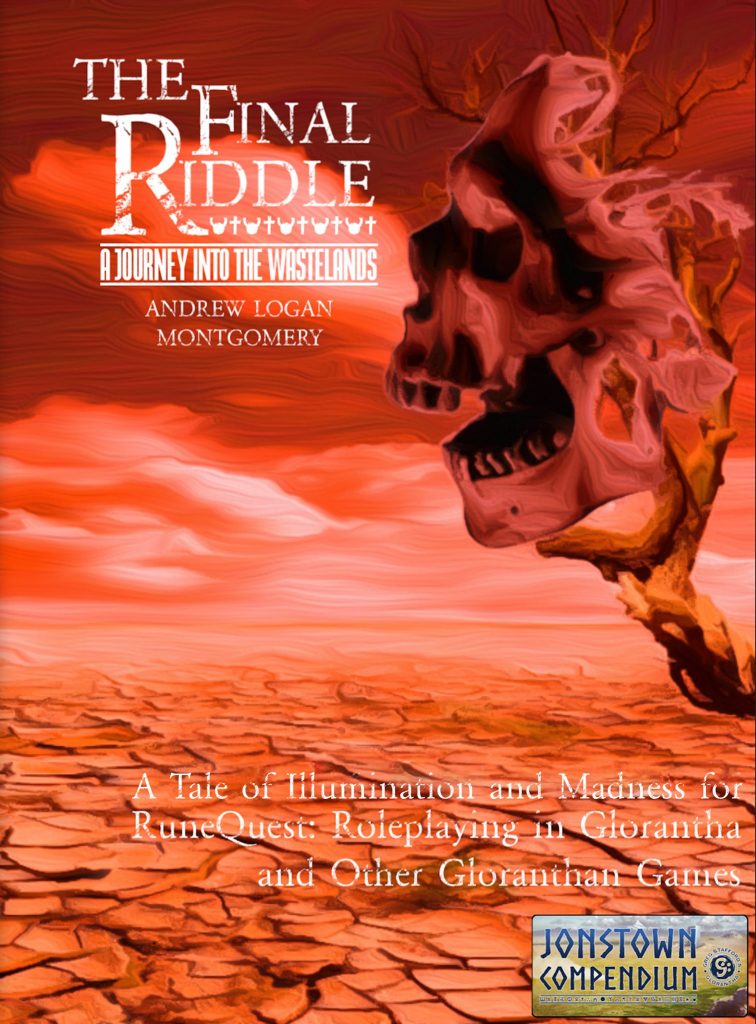
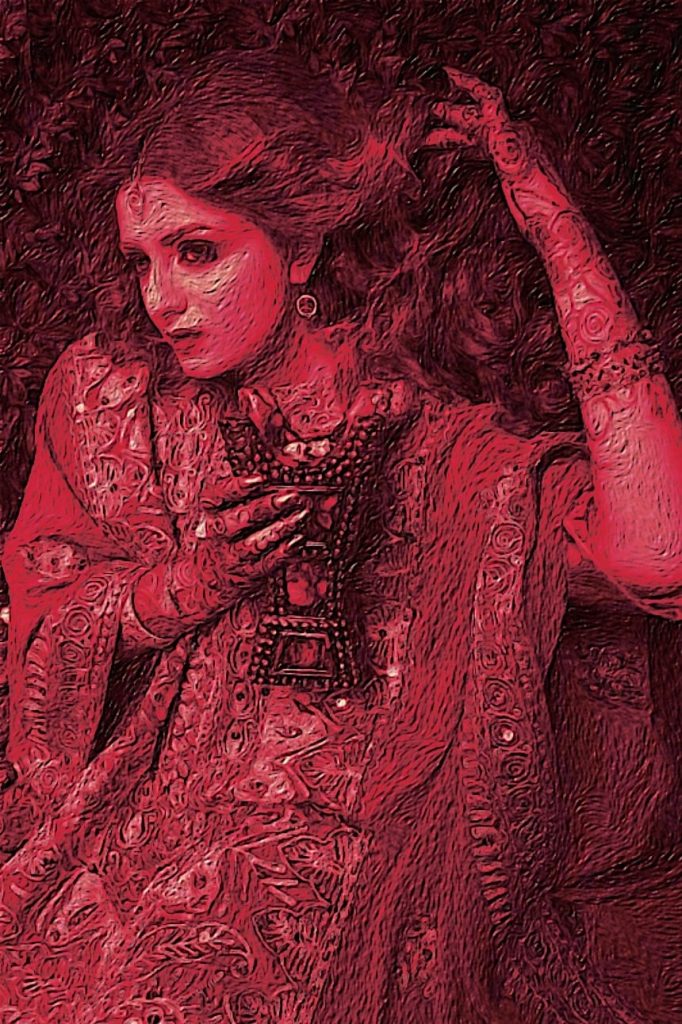
In the Great Winter of 1622, the city of New Pavis is on the edge of collapse. As the grain dole runs dry, and refugees crowd the streets, the player characters are unemployed, hungry, and desperate. When an Esrolian noblewoman arrives in the city, hiring bearers, guides, and guards, it seems like their prayers have been answered.
But Unva Prithverna’s expedition into the heart of the Wastes–seeking the palace of a lost Earth goddess–is not at all what it seems. In four linked scenarios, the player characters find their beliefs, their perceptions, their very sense of reality challenged as the lines are all blurred and they descend into the heart of Chaos.
Madness. Illumination. Terror.
From what Andrew says about it, this campaign is inspired by “Heart of Darkness“. I wonder if a fat Marlon Brando plays the Earth Goddess at the end of the journey… that would indeed be madness inducing.
Community Roundup
The community roundup is our highlight of interesting things being mentioned in the Glorantha-related Facebook groups, sub-Reddits, and other similar online places.
Picturing the Pelorian Bowl
Over on Facebook, Jeff Richard talks about the Pelorian basin, which is “a little bigger than the High Plains of the United States or nearly three times the size of the Pannonian Basin in Europe (Austria, Hungary, Romania, etc.)“
Without humans, the Pelorian bowl is a mixed temperate grassland, with wetlands and wooded areas (primarily in the hills). Native animals include bison, wild cattle, lions, black bears, sabre-tooth cats, the occasional dinosaur, and lots of birds.
[…]
The indigenous flora was likely mixed grass prairie, with plenty of riparian trees like cottonwoods, willows, maples, elm, oak, ash, etc. Much of the Pelorian plain is now deforested, but a thousand years ago, much of the northern and western plains were covered in woodlands.
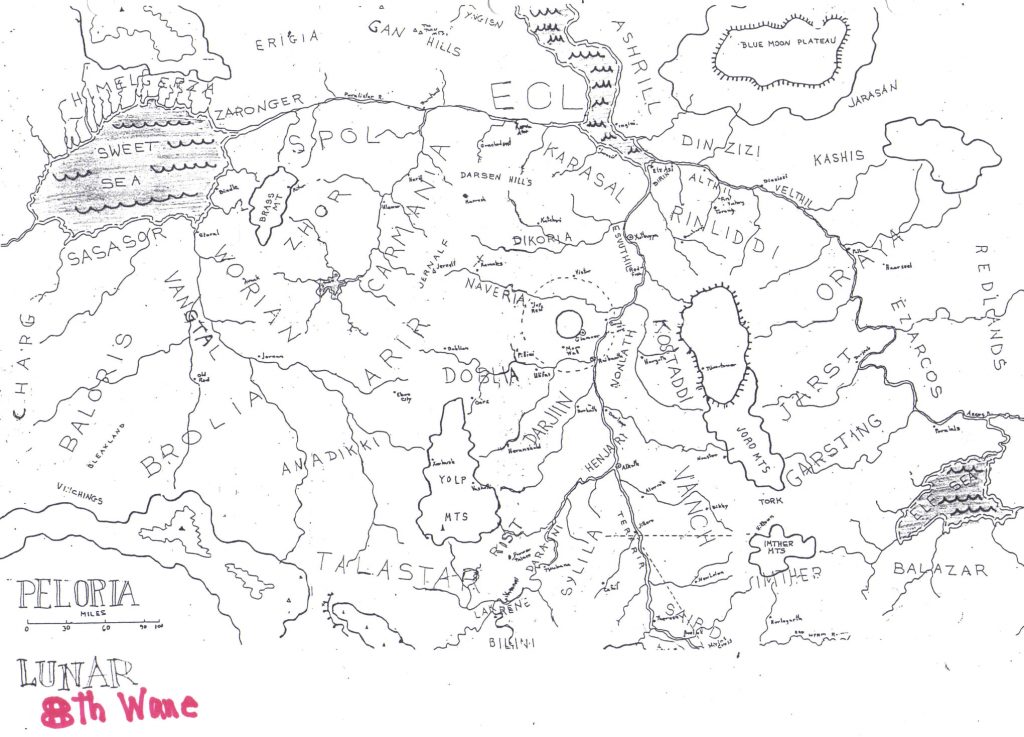
Rainfall in the region ranges from “maybe as much as 102cm” in the west (Talastar and Brolia) because of the Rockwood Mountains, down to 50cm and below in the Arcos valley and the even drier Pentan grasslands in the east. The Pelorian bowl has various precipitation figures, roughly between 50cm and 80cm. Interestingly, some places get most of their rain in the Storm season, while others get theirs in Fire Season, in what I assume is some kind of monsoon. By the way, don’t confuse “monsoon” and “moonson”.
A couple outliers exist. First, Glamour is in the rain shadow of the crater and the Red Moon, so only gets 41cm a year. And then there is Raibanth:
Raibanth is 36 cm. The presence of the Yelm cult definitely increases the number of cloudless days. Almost all of the precipitation falls in Fire Season, when the Pelorians worship Entekos the Rain Goddess and Dendara the Good Wife.
Also:
Prior to the Kalikos Expeditions, the Oslira River used to freeze over every winter. I think the Arcos and the Poralistor still do.
Jeff pictures this when he thinks of Peloria:

This is a picture of the Konza Prairie Reserve in Kansas… so I guess if you put on Sedenya’s Red Slippers and tap them together, you end up back in the Lunar Heartlands! But wait, who’s the Wicked Witch of the West then? Isn’t that the Red Goddess too? Or Jar-Eel, at least? I’m confused. The Witch was green, not red, so is Jar-Eel a Waertagi too? Did Dorothy Gale grow up and take the place of the Evil Witches she savagely killed in her youth, becoming the very evil she was trying to eliminate? Is this what the cyclical nature of the Red Goddess is, alternative between benevolence and evil? Am I going way too far in my analogy? Is this what Illumination feels like? Aaaagh!
Ok let’s go back to just looking at this as a pretty prairie:
This was the homeland of the various horse-riding cultures of the Dawn – the Pure Horse People (aka Hyalorings) and the chariot-using and cattle (or even reindeer) herding folk descended from the Starlight Ancestors. Now those nomadic and semi-nomadic people were forced out some 1400 years ago, and play as much direct a role in Pelorian life as Sarmatians did during the later Palaiologos Dynasty in Constantinople.
No wonder the Pentans are angry. Not only did the Lunars push them out of their ancient grasslands, they also ruined the scenery with their sprawling agriculture and deforestation.
A few other notes:
[…] reindeer herding has been practiced in Eol, Ashrill, and even in Karasal since before the Dawn. And goat herding is common in the western plains. But pigs are the main meat animal in most of the Pelorian heartlands.
Now this all has some impact on “Lunar” attire. Rather than looking like the cast of Rome, basic dress consists of a skirt, tunic, jacket, cloak or sleeved robe, and headdress. Commoners have few pieces of clothing and often are restricted to specific colors. The skirts of half-citizens cannot extend below the knees and usually must be shorter, while nobles and priestess wear long robes and skirts that drag on the floor.
Now that might envision images of Byzantine noble clothing, but it could just as easily be the winter attire of the Iroquois, the Volga Bulgars, the Chuvash, or the Cucuteni-Trypillia Culture.
Here’s what the Cucuteni-Trypillia culture looks like (more pictures here):
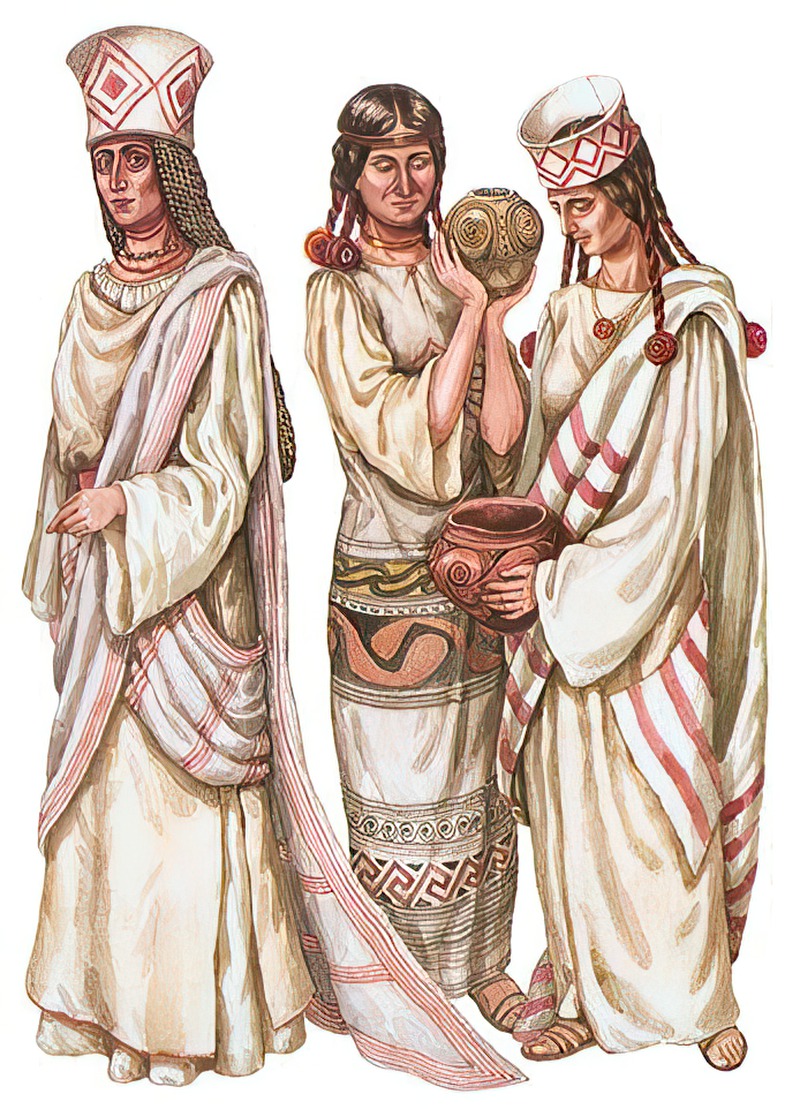
More Pelorian Details
At this point, we venture into places in Genertela that I know absolutely nothing about: Darjiin and Henjarl Marshes. Jeff says:
The wetlands of Henjarl and Darjiin are comparable to the Pripet Marshes in Belorus and Ukraine. Open sedge reed spaces alternate with nearly impenetrable shrub thickets. Pine forests can be found on the pockets of dry land (many of which are volcanic in origin). With melting snow in Storm and Sea Season, and the summer rains, the marshes flood and the local population have to take boats to get around. Much of it has been turned into rice paddies.

The area is rich with bird life, and Biselenslib and SurEnslib – the heron goddess of Henjarl and Darjiin – are important ancestral cults and bird-woman goddesses with life-nurturing qualities, but can also appear as a bird of prey or corpse eater, linked with the powers of death and regeneration. These traditional “bird woman” ancestor cults are still found among many commoners in Dara Happa.
I don’t have much commentary to give here (and maybe some of you will appreciate that!) so I’m mostly just copy/pasting what Jeff says… but I’m thinking of the Egyptian deity Bennu (also a heron “life and death” kinda guy), which may or may not have been the original for the legendary resurrecting phoenix. So I guess Darjiin is the place for this kind of nonsense!
The metropolis of Alkoth is at the edge of the Henjarl Marsh. The wetlands around the city are dedicated to rice cultivation, and Biselenslib is the ancestral goddess. Alkoth itself is a very Dara Happan city – with arguably more of an independent identity than even Raibanth and Yuthuppa. It is also an important Lunar centre.
Alkoth is about 225 kilometres downriver from Mirin’s Cross, which is the cultural centre of Saird. Alkoth’s large agricultural surplus (rice, fish, and pork) enables it to maintain a large population – which of course allows it to have plenty of specialists – scribes, potters, red-smiths, merchants, as well as nobles and soldiers.
I’ve always wanted to play in a Lunar campaign for this kind of stuff: more big cities than in Sartar or the Holy Country, more varied country side, and nothing more than a couple of paragraphs in the Guide to Glorantha, which gives you license for creative world-building. Or at least, that’s what it looks like to me as someone who hasn’t looked at this part of Genertela too closely…
During the Third Wane, Alkothi river pirates roamed up and down the Oslira River as far as the Thunder Delta. They robbed other travellers on the river, stealing goods, raiding villages and villas, and taking hostages. These river boats would have been small and easily ported.
My mind usually goes to “spy thriller movie” when I think of the Lunar Empire with its many cities and political factions, but organized crime sounds fun too… (and frankly, both are often intertwined). I love the river pirate career in Warhamer Fantasy Roleplay, so I’m pretty sure I’d love being one in Glorantha too!
Jeff tells us more about Alkoth, actually:
Alkoth is a standard Dara Happan city that also happens to be an entrance to the Underworld, and is a city of the dead. That is less of a contradiction than it might seem!
Oh my, this place is becoming quite interesting, eh? The city’s patron god is Shargash, the “Death God of the Celestial Pantheon (Death and Fire)“. That’s where the city’s connection to the Underworld lies, along with its connection to Yelm’s “dead” aspect. I don’t know much about this Shargash guy, but he apparently wields a big mace and… (checks notes) destroyed the world? Oooh. Swell. I know where my next vacation is.
That Underworld connection is going to mean that there are ghosts and other underworld things whenever the barriers between the mundane world and the divine realm is weak – temples, holy days, astronomical conjunctions, etc. Most of that activity is concentrated around the high-walled enclosures where the dead are burned – these temples are decorated with the heads and skulls of the slain, a grim and grisly reminder of the city god’s power.
Jeff even gives us a “mood picture” that is, surprisingly enough, taken from some Aztec warfare document (the Tovar Codex). I guess the ancient Central American civilizations are always a good starting point when you want a good Death God.
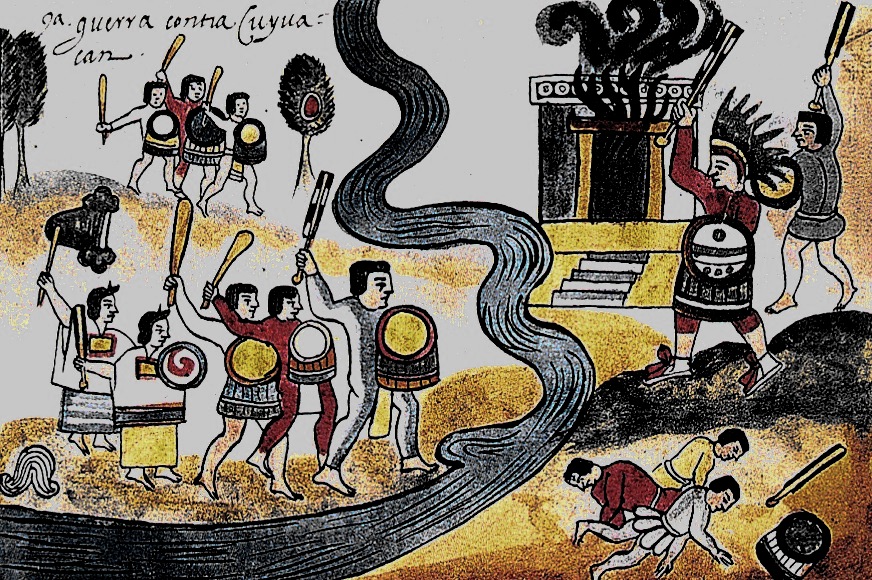
The city collects taxes from the surrounding Henjarli villages, who support the urban population with their large agricultural surplus.
Compared to Darjin, Henjarl is more “civilised”- canals crisscross the marshlands and contain the waters, making rice cultivation easier. Perhaps that is a direct analogy to Shargash abandoning Biselenslib for Oslira and her irrigation canals!
The Shargash cult controls the city’s militia, and their Rune Masters are called “Hell Men” (how cool is that?!). As with the Orlanthi society, most members of the militia are farmers and tradesmen who get mustered in times of need.

There is more about Alkoth and the cult of Shargash in the old fanzine Enclosure 1, published in 1997.
Shannon Appelcline Scenario Choice for RPG-a-Day
It’s this time of the year again: the #RPGaDay hashtag is making the rounds, with every day being an invitation to share something about your gaming habits. Shannon Appelcline, well known Aldryami expert and the hobby’s foremost historian (also available here if you want to support us through affiliate links), has shared his take on the first day’s prompt, “SCENARIO”. He mentions five scenarios, on for each year between 1976 and 1980. His pick for 1978 isn’t “Tomb of Horror”, which he considers was representative of a fading adventuring style, and instead picks “Apple Lane”:
Instead, I suggest Apple Lane, for Chaosium’s RuneQuest game (1978). A year before TSR published Village of Hommlet (1979), Greg Stafford revealed a village from his own campaign, filled with NPCs to interact with: NPCs who even had names. Add in a unique adventure for the time, where the players have to defend a pawnshop from attack, and you have a milestone in the industry. (There are caves to explore too, but there’s also some extra depth here, with a few different storylines intertwining in the caverns.)
Apple Lane is available in softcover Print-on-Demand from Chaosium.
Beer With Teeth’s RPG-A-Day
For more RPG-A-Day goodness, head over to the Beer With Teeth blog, written by the fine people who produce equally fine Jonstown Compendium supplements.

I frankly have had time to read only a couple entries yet, but I got a chuckle and a nod from Day 8: Stream… not only because that was a masterful hijacking of what I think the original intent of the prompt was, but also because I totally agree with the author’s (whoever that is… there’s sadly no attribution) statement about Gloranthan naming. There’s a lot less pressure on the Gamemaster or amateur writer to come up with cool names when the canon setting contains things like “Creek-Stream River” and “Day’s Rest” and even “Corflu”. I’m especially bad with names. But don’t worry, I can still feel totally inadequate about my world-building when I look at my NPCs, myths, and backstories!
50 Years of Text Games on King of Dragon Pass
The blog “50 Years of Text Games“, which takes deep dives into the most famous text-based video games, wrote a lengthy article on King of Dragon Pass, the strategy game based in Genertela’s early Third Age.
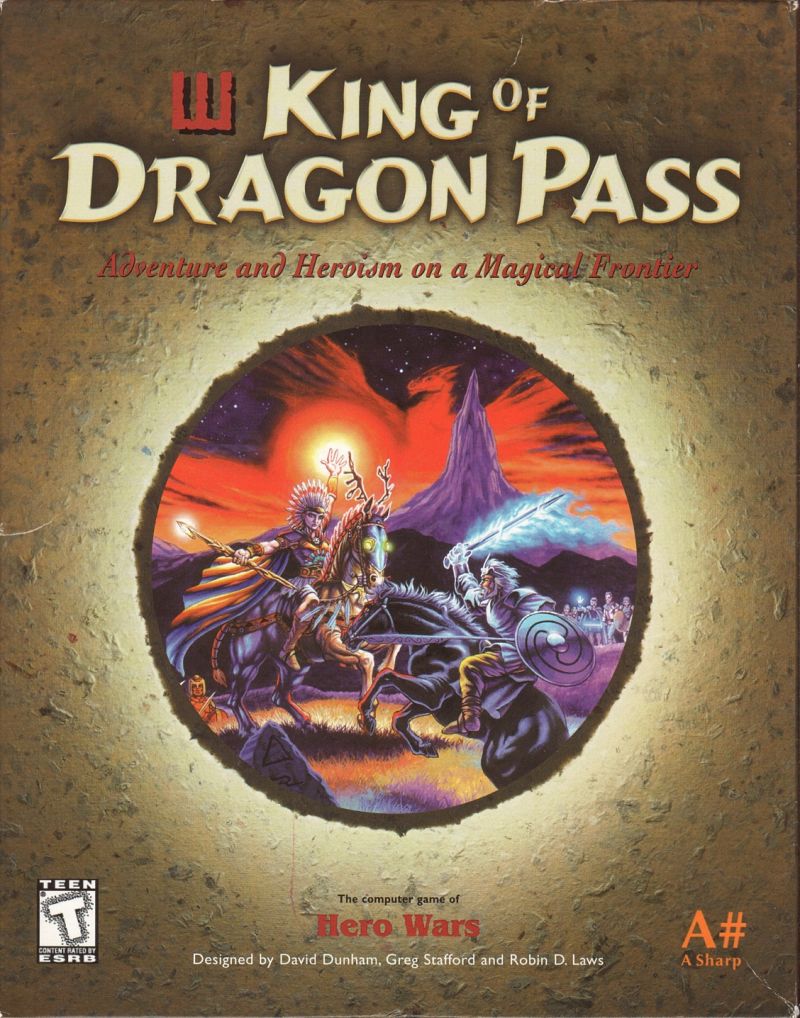
The opening paragraphs are already quite impressive:
It’s “the best game you’ve never played.” It’s “one of the best video games ever made… I’ve never played a video game with a deeper and more engaging world and story.” It’s “timeless… There is nothing like it in the world: a game with a smoothly telescopic scale that alternates seamlessly between fantasy empire-builder and character-driven RPG.” It’s “a tough game to describe… part text adventure, part civilization game, and part choose your own adventure book… it feels like a book come to life.” It’s “an original game design, something all too rare in this world of big-budget clones.” It has “a more convincing illusion of conflict and consequence than anything I’ve played.” It’s “just so different than any other game… it flows like a novel, but one you have a hand in writing… you can play over and over again.” It’s “amazing,” it’s “basically peerless,” it’s “outstanding,” it’s “exceptional.” It is, one reviewer declared, “the game you’ve been waiting for.”
And when it was first released to retail, it bombed.
…but the rest of the article will go deeper than any other article I’ve read on this game.
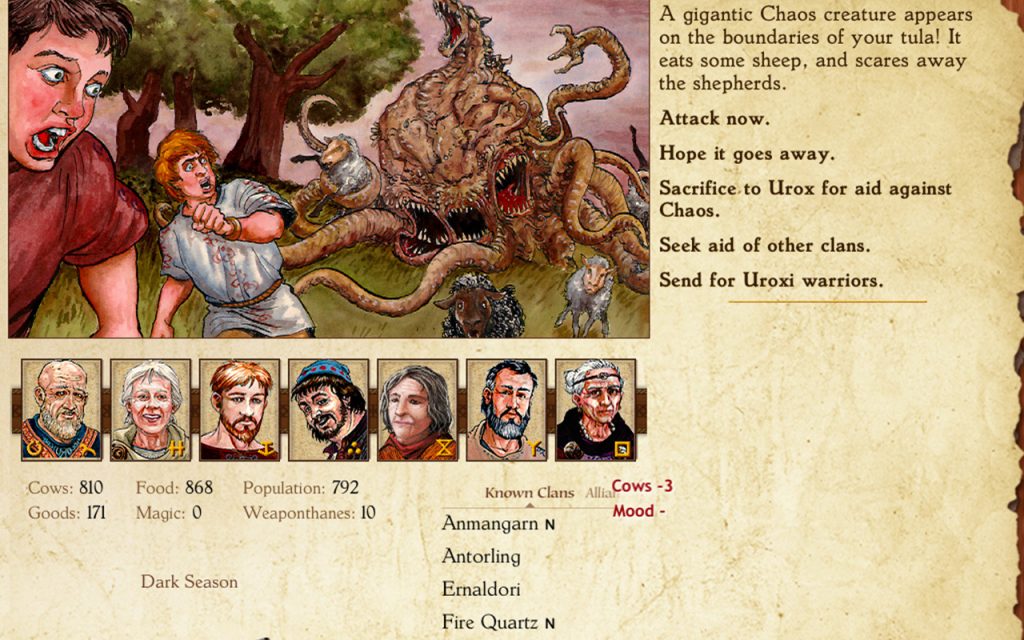
You can still get King of Dragon Pass from many online game stores — I personally recommend playing it on a tablet, because it’s quite nice to play a few turns when you’re taking the subway or something. Its “spiritual successor”, Six Ages: Ride Like The Wind, was released in 2018. A sequel to Six Ages is currently in development.
What Happened to Tradetalk Magazine?
Tradetalk is a magazine that was published by the German “RuneQuest Society”, aka “RuneQuest Gesellschaft e.V.”, aka “The Chaos Society”. It ran for 17 issues between 1996 and 2009, and it kept the flame of Gloranthan gaming alive in the late 90s along with several other fanzines such as Tales of the Reaching Moon.

Over on BRP, Andre Jarosch gives us some behind-the-scenes information about why the publication stopped:
2005 was the year in which all fan publications were asked to stop, until a new fan policy was published. So Tradetalk 14 in may 2014 was the last one published before that.
Tradetalk got the okay from Issaries Inc./Greg without any problems, and we continued with Tradetalk 15 in 2007, but we only managed to publish one issue per year.
In 2009 our last issue was Tradetalk 17.
Why we stopped publishing Tradetalk?
Many reasons:
– We, the publishers, were almost never the authors of the articles and adventures, but relied on fan authors to send us material to publish, or sometimes we asked our buddies if they would write something for us.
– We at Tradetalk were not really interested in writing Second Age fan stuff for Mongoose RQ
– Some of the old RQ fans haven´t made the transition to HeroQuest… and wouldn´t/couldn´t write for Tradetalk anymore.
– Since HeroQuest is less crunchy, we needed MORE text to fill an issue with content (a RQ adventure with three NPCs and four Broo was made up of 3 to 4 pages of stats!.. in HeroQuest these many stats were not needed, so we needed more content to get Tradetalk to the size we needed to fill the 48 pages).
– We wanted to make theme issues, and not only a complation of various articles… That is why it took so long (to long) to get the next issue ready.
– Many other fanzines were around (Hearts in Glorantha, The Zin Letters, and Rule One) in which potential Tradetalk authors could publish they stuff
– Some of the fans moved on to write for Issaries/Moon Designs official line of HeroQuest books, and had no time for writing for Tradetalk
– Some of the stuff we asked to publish took to long to get published, and the authors changed their minds (because they were assocciated (sic) with official publishers, and don´t wanted to get their “fan stuff” published, because it could be viewed as canon if the author was part of the official publishing house*).
*NOTE: The author(s) never said it so explicitly, but i read that between the lines… maybe i am wrong about this.Maybe, at some point, we will publish something on the JC and call it Tradetalk 18… but it will not be like the Tradetalk 18 that was planned in 2009.
Tradetalk is still available in PDF from DriveThruRPG. You can also find an index of the issues on the Well of Daliath, and a more detailed index on Shannon Appelcline’s fanzine index project.
That’s a Big Map
Those of us who have the Argan Argar Atlas map pack know that when you put them all together, you get a really big map. I took a picture of my own set a couple years ago, with a banana for scale.
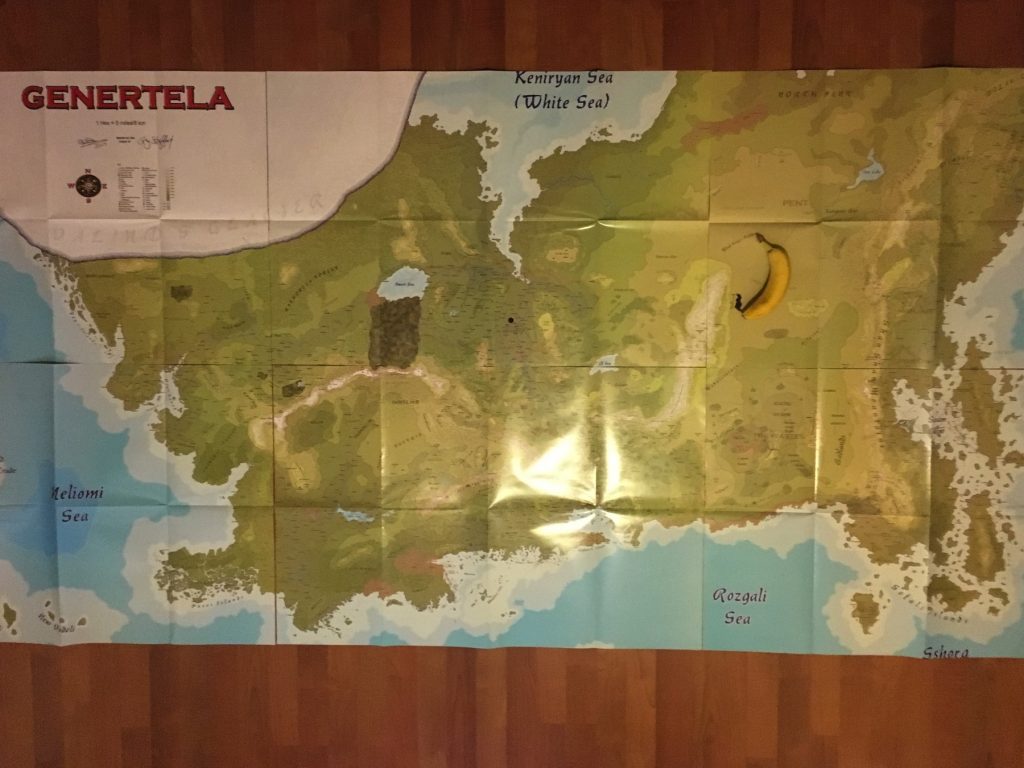
On Twitter, Dr Moose shows off a wall-mounted version of the map. Looks nice, although now he’ll have to do some heavy renovations to straighten up that ceiling!
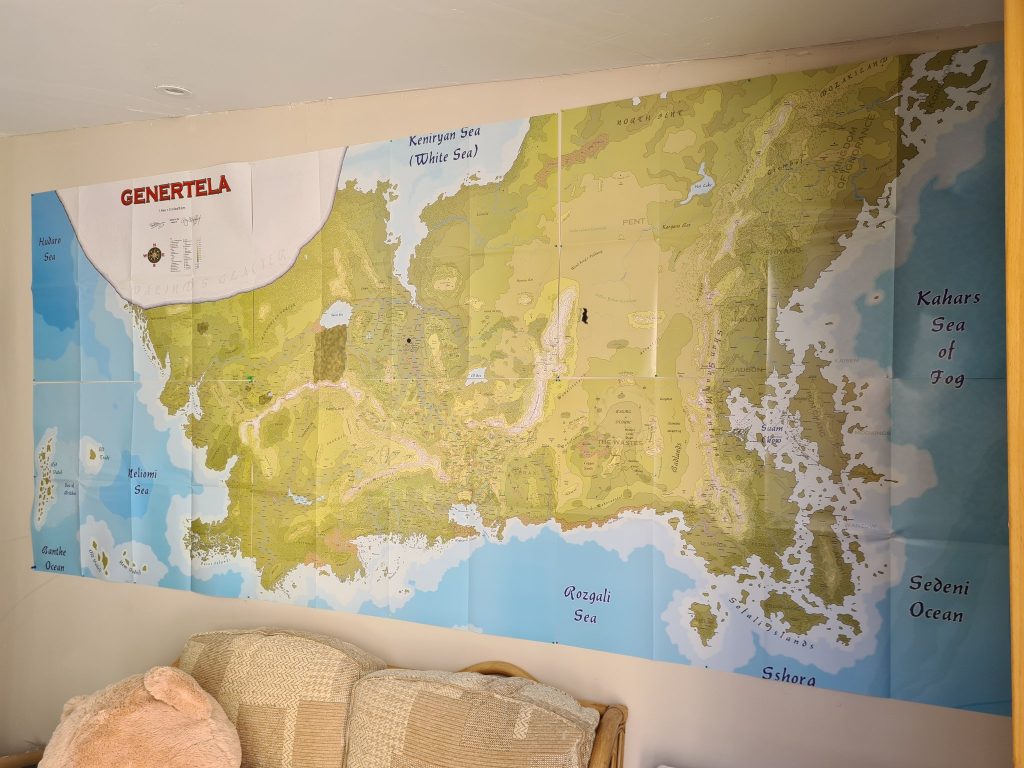
Elsewhere on Arachne Solara’s Web
Not everything is about Glorantha, although most things are! Here are loosely relevant things that we found on the interwebs.
Meet Jackie, The Real Melo Yelo
The Mysterious Universe website has a story on a baboon war hero… in case, you know, you needed inspiration for your Praxian Adventurers or their sidekicks!
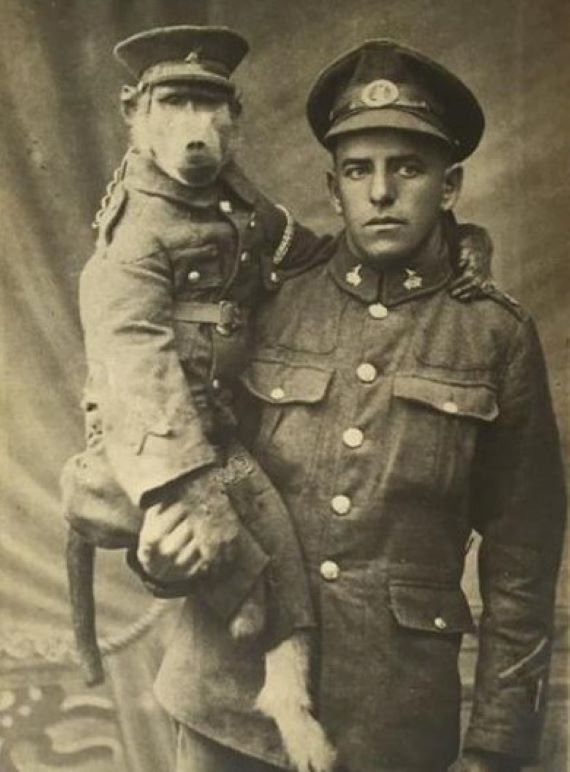
The short version is as follows: Albert Marr found an abandoned baboon on his family farm in South Africa in 1913, and decided to adopt it. It proved uncharacteristically tame and easy to domesticate, and they became inseparable. In 1915, when Marr enlisted in the South African Infrantry Regiment, he was allowed to bring his pet, which was quickly adopted as a sort of mascot by the soldiers… but, the baboon had a much more glorious future in mind…
Go Big Or Go Home
Don’t hesitate to make your great and major temples big! Check out the Great Temple of RamessesII in Abu Simbel:
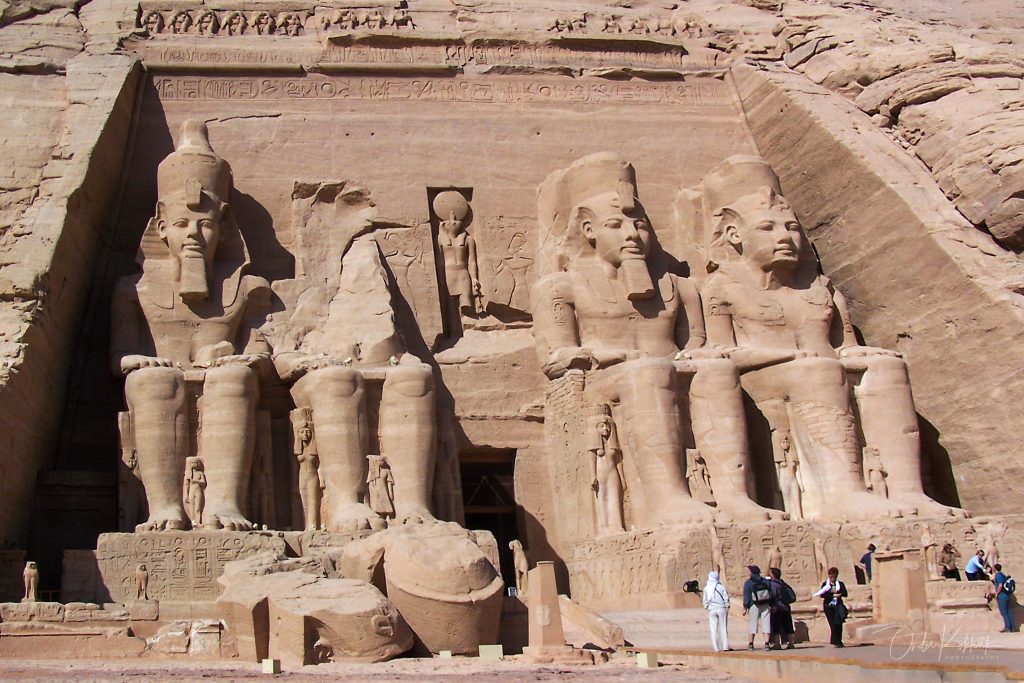
Mozaik Education has some digital reconstructions of it, if you want to picture what it might have looked like with some fresh paint on it:
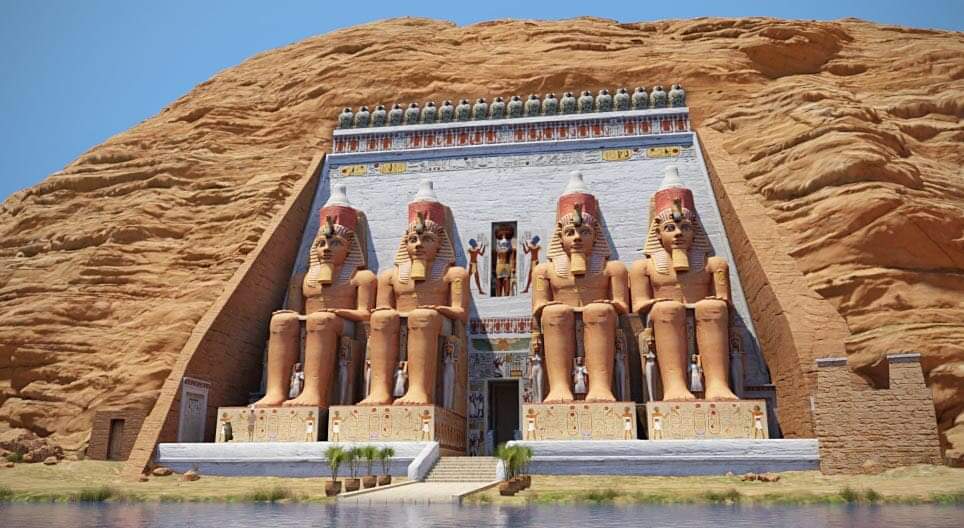
La Porte d’Ishtar
If you speak French (I know there’s a big RuneQuest and HeroQuest community in my home country!), or, well… if you want a fun way to learn French, I guess… the ancient world RPG “La Porte d’Ishtar” (“Ishtar’s Gate”) has been successfully crowdfunded. If you missed the crowdfunding, you can pre-order it, too.


The game’s description, butchered by some hasty translation, reads:
Ishtar’s Gate is a tabletop roleplaying game that lets you live perilous adventures in the world of Kishar, an ancient post-sumerian setting that takes inspiration from the great Sword & Sorcery stories. The core book is 384 pages long, with 80 pages of rules and the rest dedicated the world of Kishar.
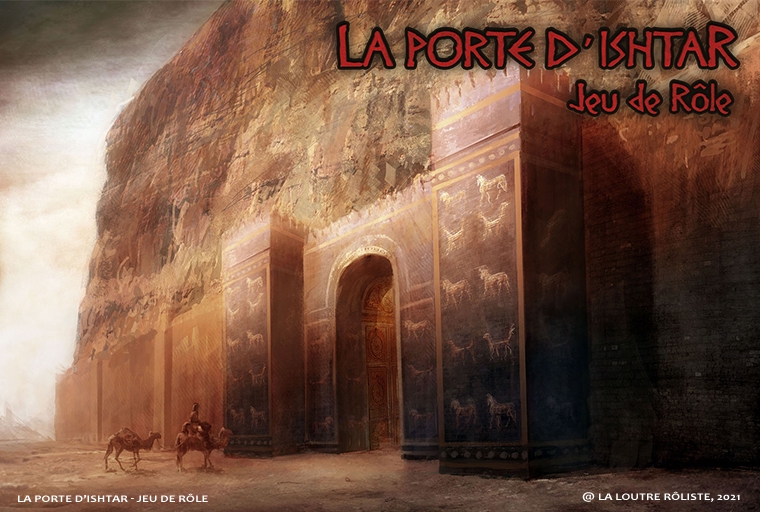
Thank you for reading
That’s it for this week! Please contact us with any feedback, question, or news item we’ve missed!


